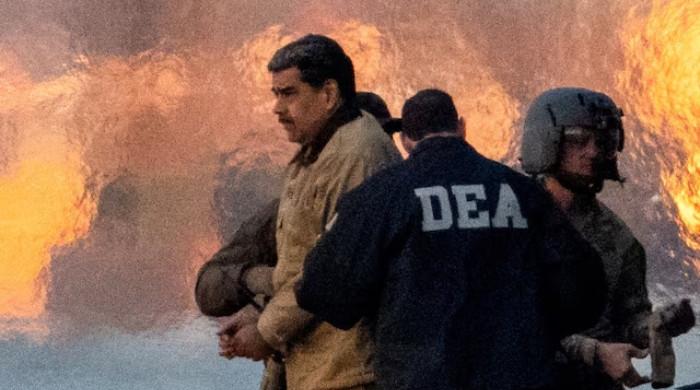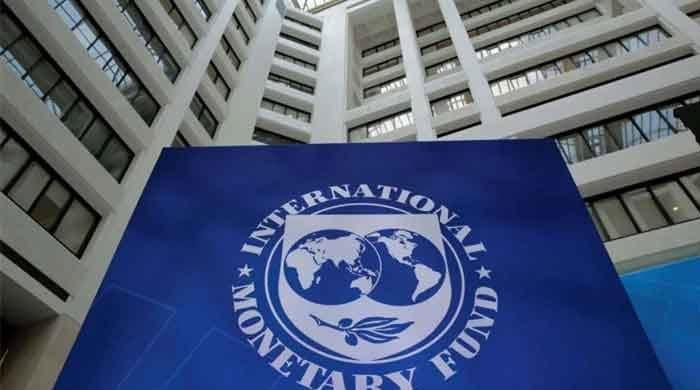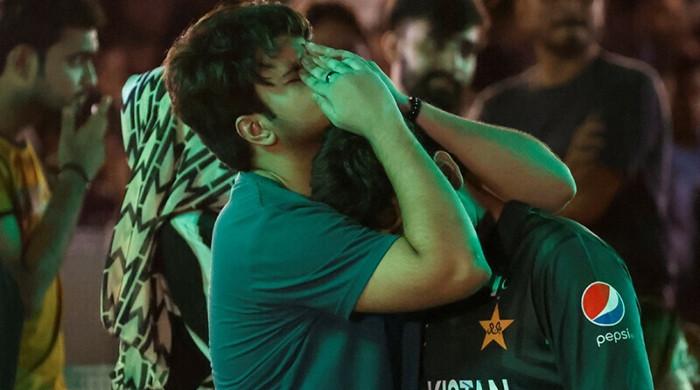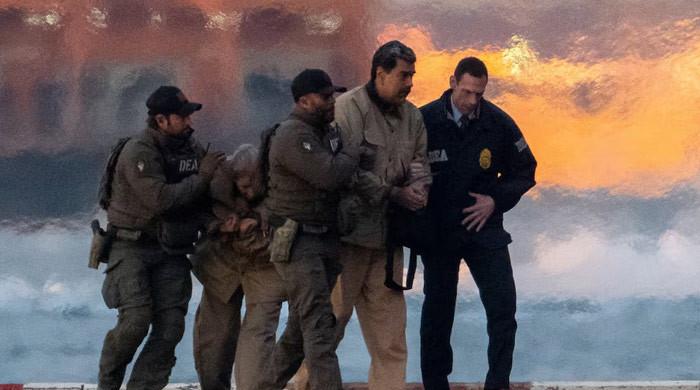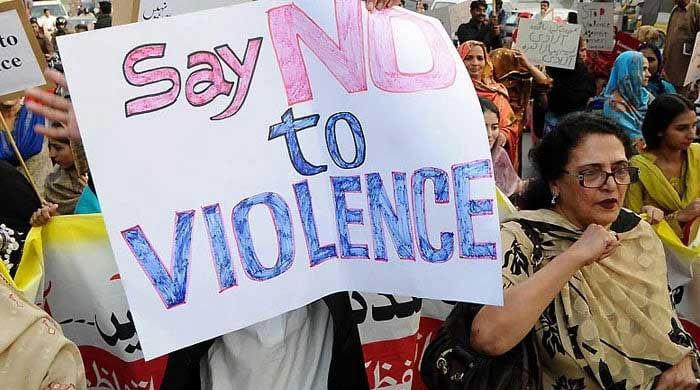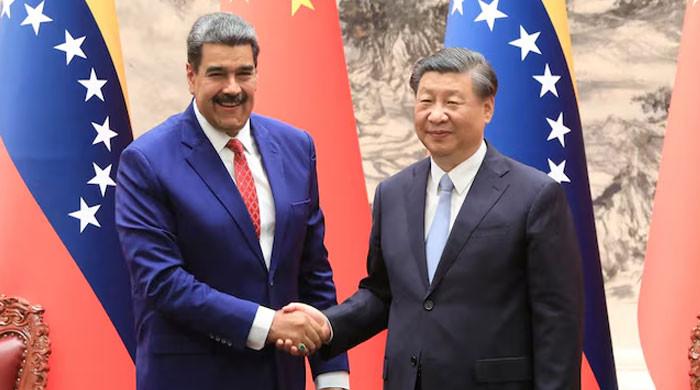PTI-PDM negotiations — a 'glimmer of hope'
Mere fact that these political opponents have agreed to disagree amicably is welcome news amid political chaos
May 04, 2023
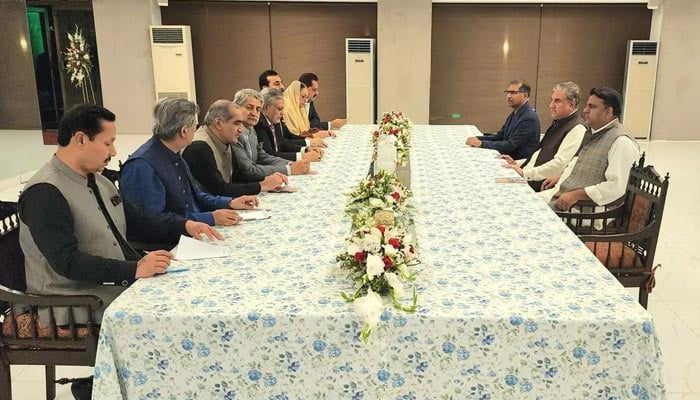
The talks between the Pakistan Democratic Movement (PDM)-coalition government and the Pakistan Tehreek-e-Insaf (PTI) have survived the avoidable raid on the PTI leader Chaudhry Parvez Elahi’s residence in Lahore.
Irrespective of the outcome of these talks, the mere fact that these political opponents have agreed to disagree amicably is welcome news amid all the political chaos.
Both sides should ensure that nothing derails the much-awaited negotiations. The dialogue is mainly about the constitutional provisions regarding the timing and manners of the elections for the national and provincial assemblies.
However, sources say that the ongoing International Monetary Fund (IMF) programme and the next federal budget were also on the table in relation to the elections.
It is good to see that the PDM and PTI have not ignored Pakistan’s economy in these talks — even if the economy was not their main agenda. The negotiating teams on both sides must have read the recently released reports of the Asian Development Bank, the World Bank, and the IMF on Pakistan’s economic outlook.
Painting a bleak picture of the economy, the three international financial institutions (IFIs) have cut their GDP growth estimates for Pakistan for the current fiscal year (ending on June 30) to 0.6%, 0.4% and 0.5%, respectively.
They have also highlighted the chronic problems holding back Pakistan’s economic growth. These problems include unsustainable debt, weak external position (balance of payments crisis or dollar deficit), and structural issues such as low productivity, poor governance, weak institutions, energy shortages, and social inequalities.
Besides, they have cautioned that political and security troubles in Pakistan scare away investors and create uncertainties (for development partners, lenders, and citizens of Pakistan). Many others, including the Economist Intelligence Unit, have quoted political uncertainty as a major risk to Pakistan’s economic revival.
But we do not have to rely on external reports to assess the state of the economy of Pakistan. The Ministry of Finance also issues its monthly ‘Economic Update and Outlook’ (EUO).
Incidentally, the punchline of the latest EUO for April 2023 — “Pakistan’s economy is still facing significant challenges characterized by high inflation and a slowdown in economic activity” — endorses the IFIs’ outlooks for Pakistan.
The MoF urges the government to follow an effective revenue mobilisation (tax collection) and cautious expenditure management strategy.
The EUO concludes: “Successful completion of [the] IMF program will pave the way to attract more capital inflows, further stabilization in the exchange rate and alleviating the inflationary pressure.”
However, successfully completing the IMF programme seems difficult, especially in the existing scenario where Pakistani polity is divided across all possible fissures. Let us recap why concluding the ongoing IMF programme has become so hard.
With considerable delay and inconsistencies, Pakistan has taken most of the committed fiscal consolidation and monetary tightening measures for the ninth review of the IMF’s ongoing programme. The current historically-high headline inflation and consequent high-interest rates are the side effects of those measures.
Staff-level agreement (SLA) after the review mission’s visit has been pending since February 9. The SLA is conditional on financial assurances and timely rollovers from bilateral lenders (friendly states like China, Saudi Arabia, and the UAE).
The rollovers got considerably delayed for various reasons. One was the emerging geopolitical and geoeconomic realignments in the region. Another was the ongoing tug-of-war between political opponents and the infighting among and between constitutional institutions in Pakistan.
Thanks to the consistent follow-up, most probably from the powers that be, financial assurances worth $4 billion have been arranged with the bilateral lenders. According to the IMF, the gross financing needs are $7 billion, while the Pakistani side, encouraged by reduced current account deficit, calculates it to $5 billion.
The two are trying to sort out their difference in interpretation. However, time is running out. The IMF programme comes to an end on June 30, 2023. The delay in reaching an SLA has already put a heavy toll on the value of the rupee.
Further delay will also increase the quantitative targets (including the foreign exchange reserves and external financing assurances) that Pakistan will be asked to achieve. Here’s how:
Pakistan is lagging behind the original schedule of the ongoing IMF programme. The ninth review was supposed to take place on November 3, 2022 followed by the tenth review on February 3, 2023 and the final one on May 3, 2023.
However, political turmoil, floods, and delay in getting external financial assurances upended that schedule.
The IMF may decide to merge the remaining reviews, as it did with the seventh and eighth ones, to conclude the programme by June 30. This would mean that Pakistan would have to meet higher quantitative targets to receive any future disbursement of the loan tranche.
This would also imply that the IMF would have a say in the next federal budget. So, the government would have no chance to give an ‘election budget’ that makes people happy. That is something a political government cannot afford in the run-up to general elections.
However, the government can also not afford to let go of the much-needed loan tranches, and that too after inflicting the pain of inflation, high-interest rates, and depreciation of the value of rupee to meet its commitments with the IMF.
Therefore, it is looking for additional external financing from its friends China, Saudi Arabia, and UAE to stay in the programme and get at least one of the three tranches left. How soon these friends loosen their pockets depends on how the talks between the PDM and PTI go. The longer the political mess lasts, the longer the friendly countries will wait to help.
Pakistan has another reason to stick with the IMF programme and keep its political temperature from getting too high. It needs to secure $25 billion to $35 billion of external financing (depending on its current account deficit) every year for the next four years. It also has to pay back a massive $77.5 billion in external debt from April 2023 to June 2026. That includes money owed to China, private creditors, and Saudi Arabia.
Pakistan can’t afford to pay its external debt and buy essential imports without getting another IMF programme (or extending the current one with a bit more money) after June 30. However, the IMF won’t be keen to deal with Pakistan if there is political chaos.
Both the PDM and the PTI should note that whoever wins the next general elections and forms the federal government will have to play by the IMF rules and do what it takes to get the IMF funds.
Once in power, they must try to improve the social protection programme and reduce the pain of the vulnerable segments of society. However, they shouldn’t make big promises of giving economic relief to people in their election campaigns. The current government and the next one can’t afford to give any general (non-targeted) relief without risking the country’s default.
Pakistan is in a tough spot right now, both economically and politically. It has to finish the IMF programme to avoid a default. But it also has to deal with the political and institutional mess that slows down its economic reforms and makes its bilateral lenders lose trust. The talks between the PDM and PTI are a glimmer of hope in this situation.
If the country’s politicians can act like grown-ups and agree on the main economic issues, they can make things better for Pakistan’s future. If not, we might face another crisis that will be hard to bounce back from.
The writer heads the Sustainable Development Policy Institute.
Originally published in The News




